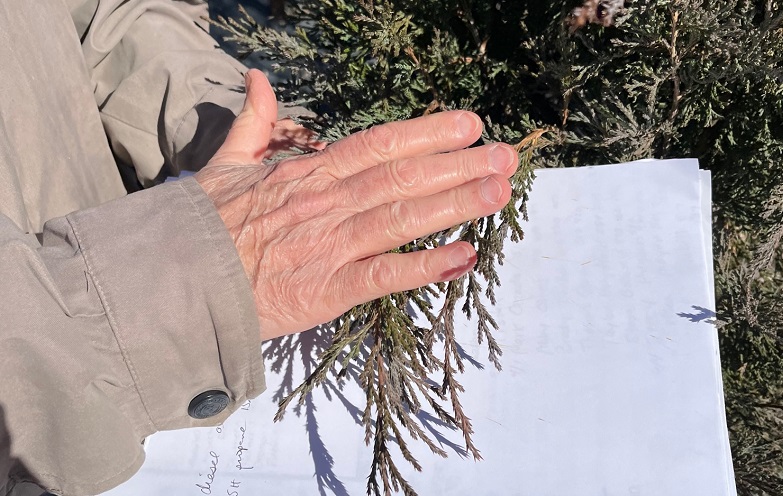CHECK FOR SPIDER MITES EARLY!!!!!!
Don’t wait for your Italian Cypress or other evergreens to turn gray, then completely brown before determining if they have spider mites. By then it will be too late. This is one pest that you want to stay ahead of. If you wait until you see the symptoms, it will likely be too hot to spray. The best time to treat for spider mites on Italian Cypress or other evergreens is in February.
Even if your Cypress or Junipers look healthy, it is worth checking them early in the spring before the damage begins to show. After symptoms begin to show the recovery will be long, or it may even be too late for recovery to take place.
You will need a white paper plate or a piece of white paper on a clipboard or a magazine to support it. Just slap a branch on the paper and wait a few seconds. It may take a minute for the mites to start moving. The harmful mites move slowly. If you see any other small insect moving quickly, it is more than likely a predator, like the Persimilis mite or even a small house spider.
Wipe your hand across the paper. If it leaves streaks, these are most likely spider mites. Occasionally we may see thrips on these plants, and they will leave a streak as well. Thrips are tiny sucking insects that cause damage too, so they will need to be controlled. The thrips are tiny, like spider mites, but their body is elongated and they are usually light in color.
It is recommended that you check for spider mites monthly in the spring. I recommend starting in early February, then again the beginning of March. As I said, it is not good to let them get established, as they can ruin a nice tree. If you wait too late to treat it may be too hot to spray ANY product. Once you see the damage, it is done, and the tree may not recover.
All Seasons Horticultural Oil is one of the best controls for spider mites. When applied correctly, it works by drying fast and suffocating insects. You must pay attention to temperature and humidity for it to work well. Thorough coverage is also key.
SPRAY PLANTS THOROUGHLY WHEN TEMPERATURES ARE BETWEEN 45°F AND 85°F AND HUMIDITY IS BELOW 50%. (FAST DRYING CONDITIONS)
DO NOT SPRAY IN HIGH TEMPERATURES AS INJURY MAY RESULT.
Repeat applications are usually not necessary if thorough coverage is achieved, but checking monthly is advised. Follow the directions on the label for timing a follow-up spray.
